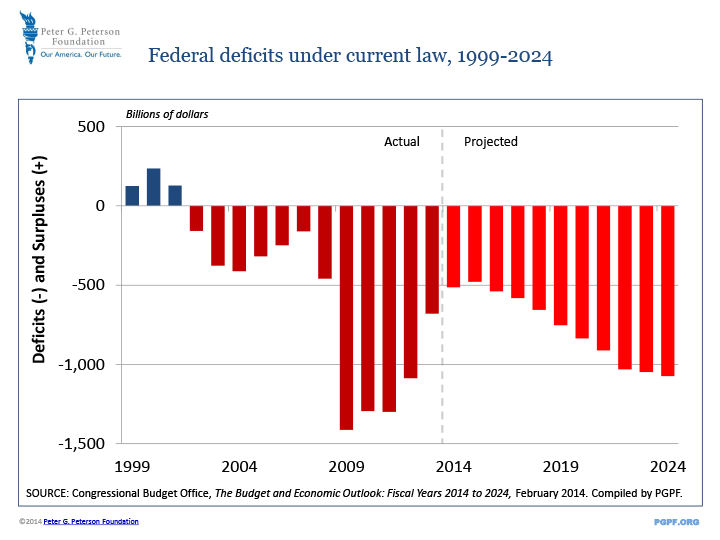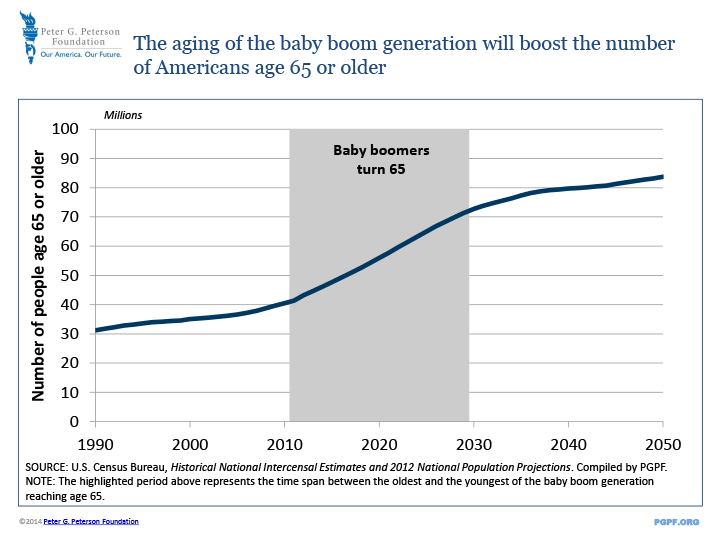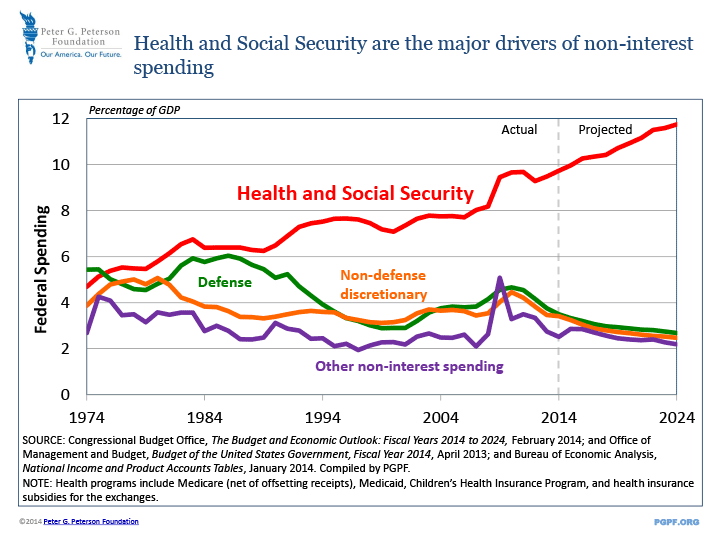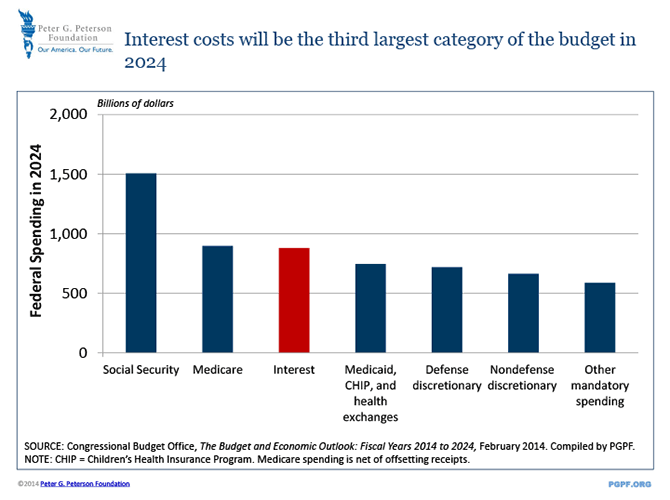You are here
CBO’s New Budget Projection Shows More Action Needed to Tame Debt and Deficits

Though the economy continues its recovery and we have made some progress on deficits, our deficits will begin growing again soon, and major long-term fiscal challenges remain. The Congressional Budget Office (CBO) warns that "such large and growing federal debt could have serious negative consequences, including restraining economic growth in the long term, giving policymakers less flexibility to respond to unexpected challenges, and eventually increasing the risk of a fiscal crisis."
In its new Budget and Economic Outlook report, CBO projects that deficits will total $7.9 trillion over the next 10 years, while public debt will rise from $13 trillion in 2014 to $21 trillion by the end of 2024.
-
Recent Good News About Improving Deficits Will be Short-Lived: Although the federal budget deficit is projected to shrink this year, the good news will be short-lived. By 2016, the federal government’s deficit will begin to rise again, according to CBO. Deficits increase in dollars and as a share of the economy: by 2024, they are projected to be almost $1.1 trillion — or 4 percent of gross domestic product. These deficits reflect a structural mismatch between revenues and spending.
CBO’s current-law projections are, if anything, optimistic. Under less optimistic assumptions about the future, the budget deficit would be even worse.
- Baby Boom Retirements Begin to Balloon Enrollment: The first wave of baby boomers turned 65 in 2011, and they have become eligible for Medicare and Social Security. Low-income boomers may also qualify for Medicaid to help pay for nursing home and other care. As the baby boomers continue to age and retire, the number of Social Security, Medicare, and Medicaid beneficiaries will grow, placing increasing pressure on the federal budget. Between now and 2025, the number of Social Security beneficiaries will grow three times as fast as the number of workers paying taxes to support the program.
- Spending on Healthcare and Social Security Expected to Soar: As the number of older beneficiaries grows, healthcare and Social Security spending are expected to rise as a share of GDP and as a share of the budget, while other programs are projected to shrink. By 2024, CBO projects that spending on health programs and Social Security will climb to 53 percent of the total federal budget – up from 42 percent in 2010, the year before the first baby boomers turned 65.
- Interest on the Debt Will Become Third Largest Government Expenditure:Interest payments will soon become the third largest item in the federal budget, after Social Security and Medicare. Right now, interest on the debt costs $233 billion. CBO projects that interest costs will reach $880 billion by 2024. Those higher interest payments reflect projections of both rising levels of debt and higher expected interest rates. Cumulatively, interest payments on the debt will cost the federal government $5.8 trillion over the next 10 years. As interest costs grow, they could crowd out investment in other priorities, including education, research and development, and other programs that could help our economy grow.



As a share of the economy, our national debt is already higher than at any time since 1950, shortly after the end of World War II. CBO’s new report warns that, unless current policies change, debt will climb even higher and become unsustainable in coming decades. Policymakers should work together to close the long-term gap between spending and revenues, preserve important public investments for the future, and put the budget on a sustainable long-term path.
